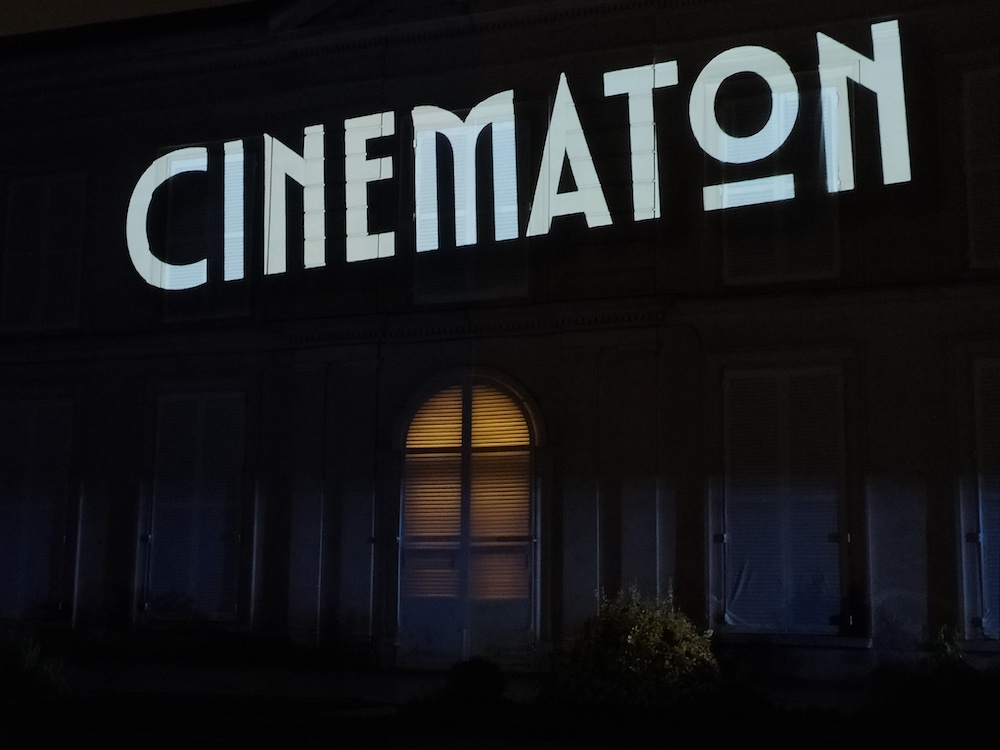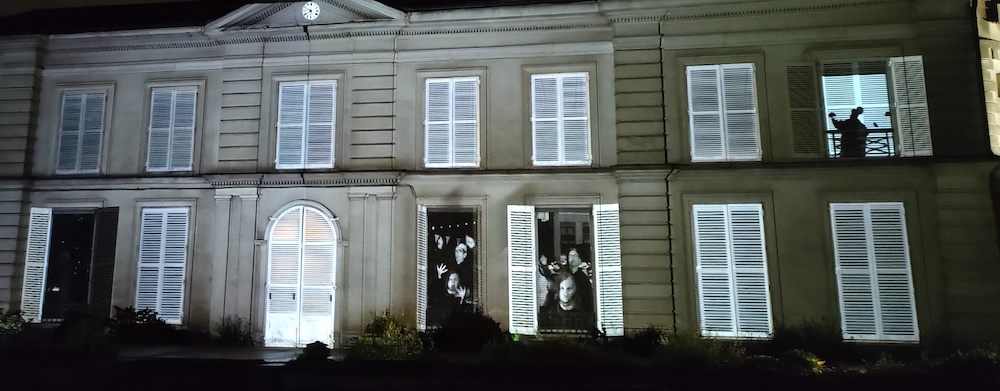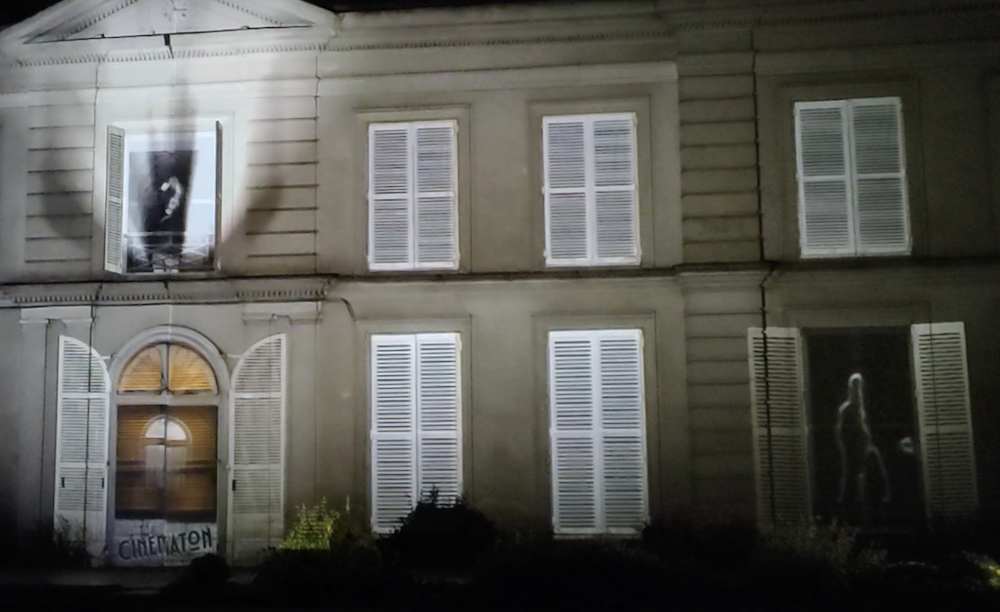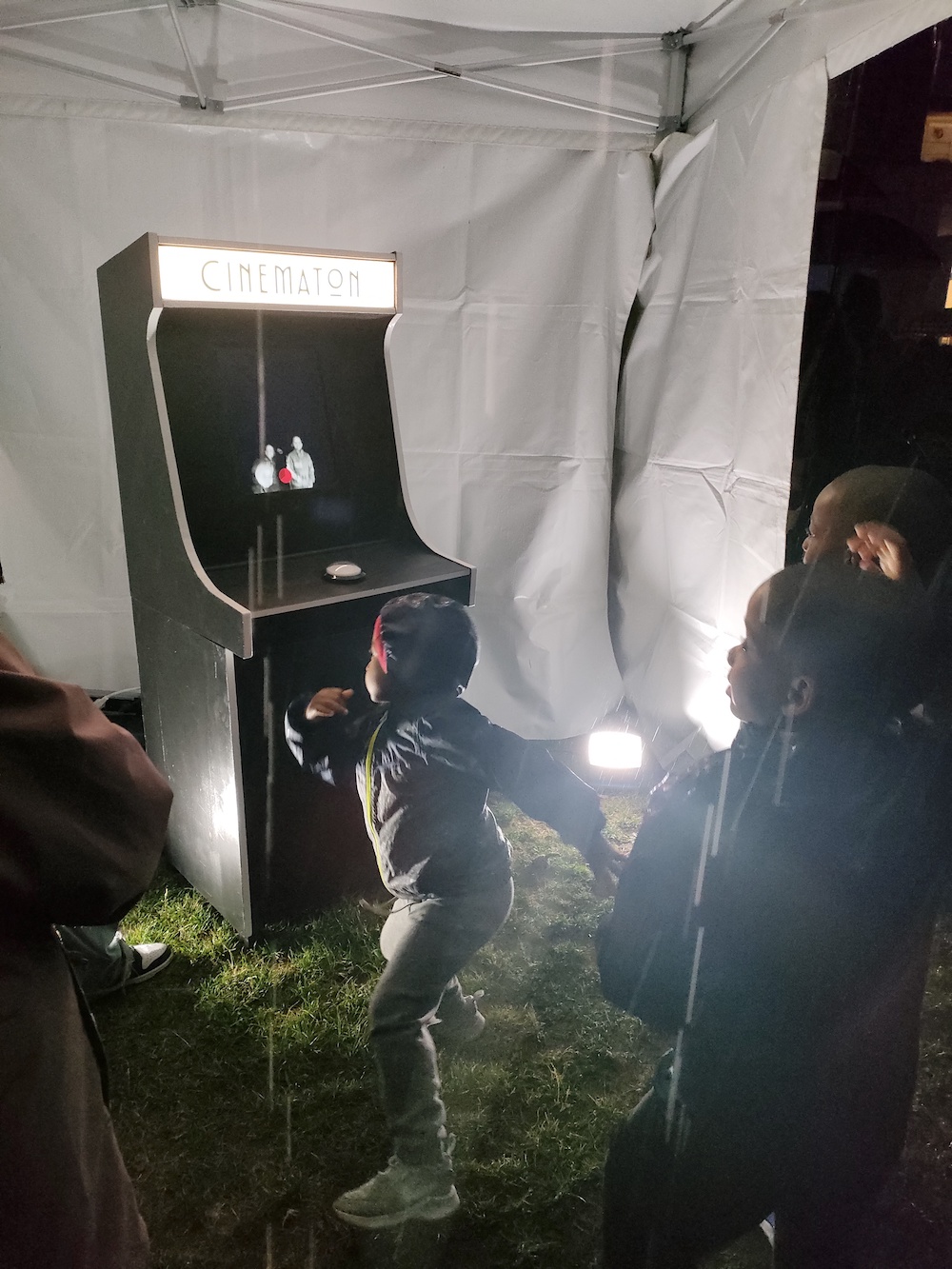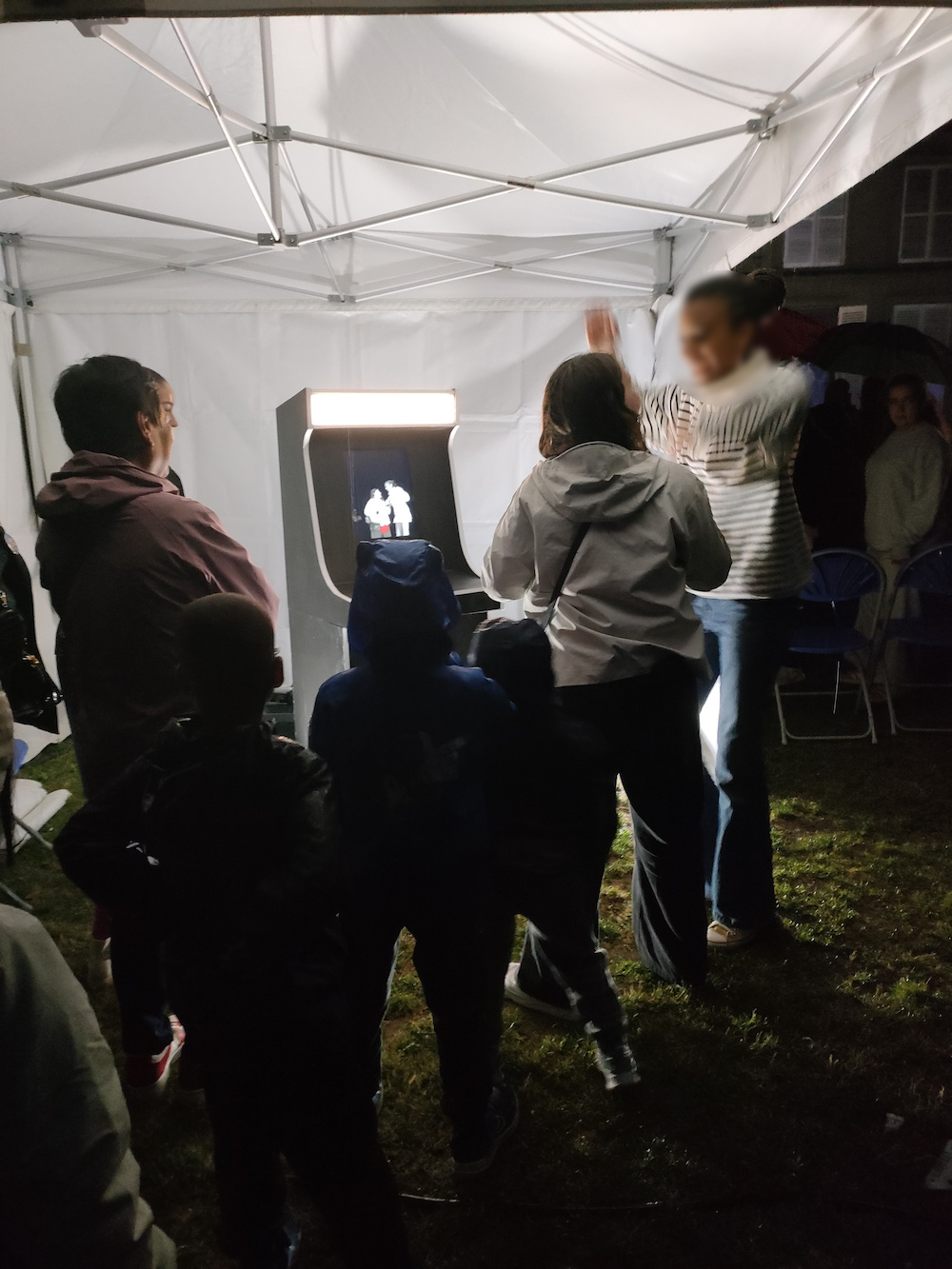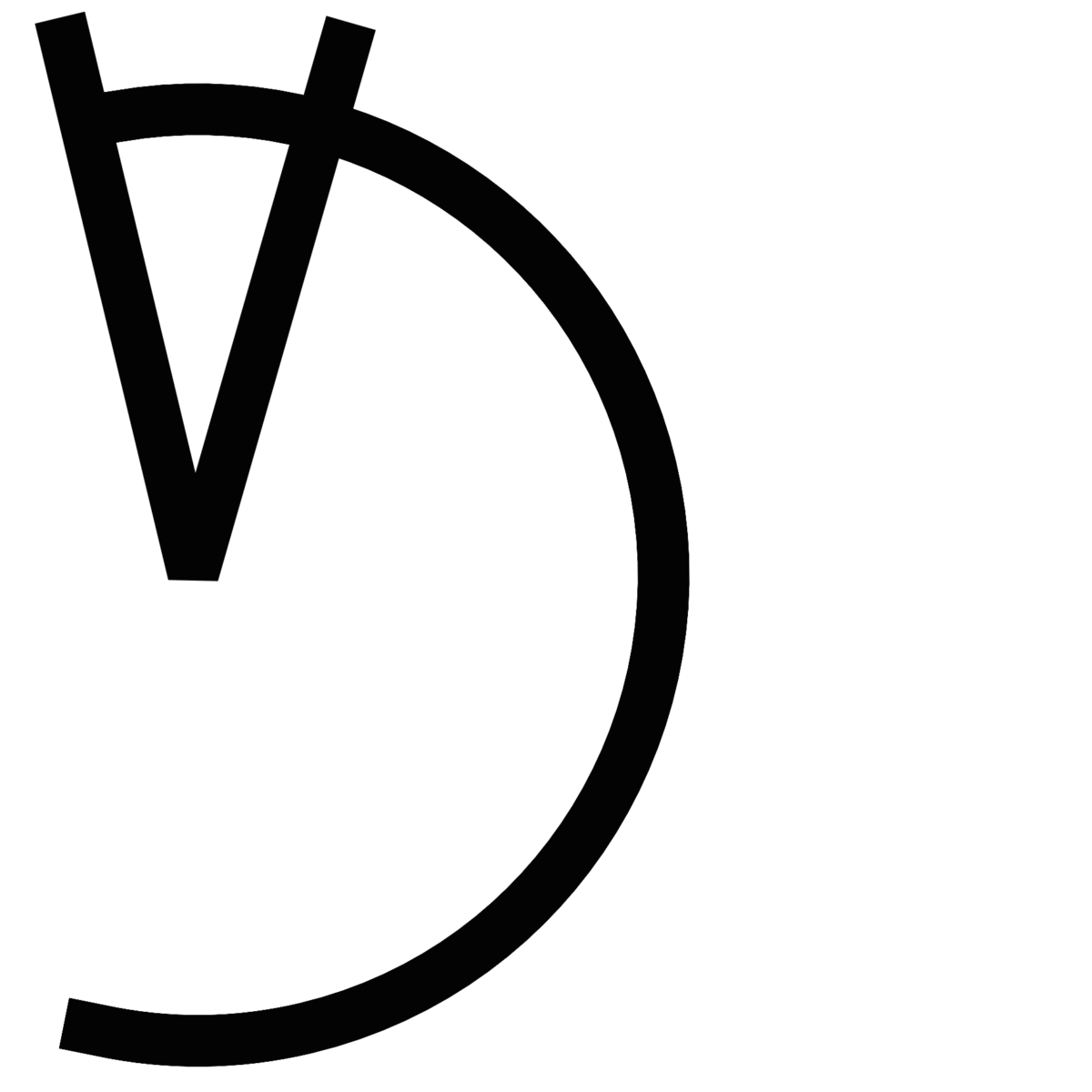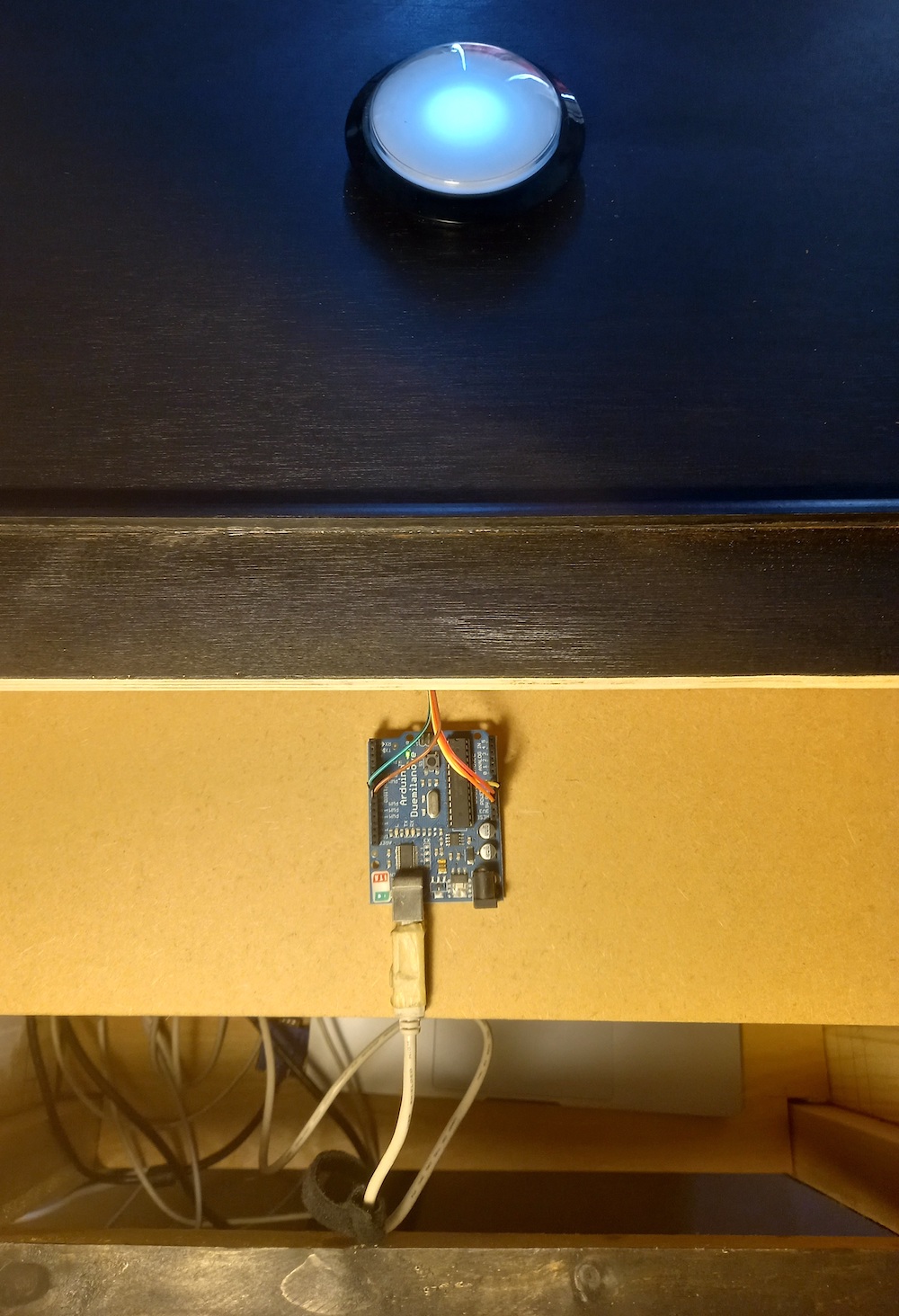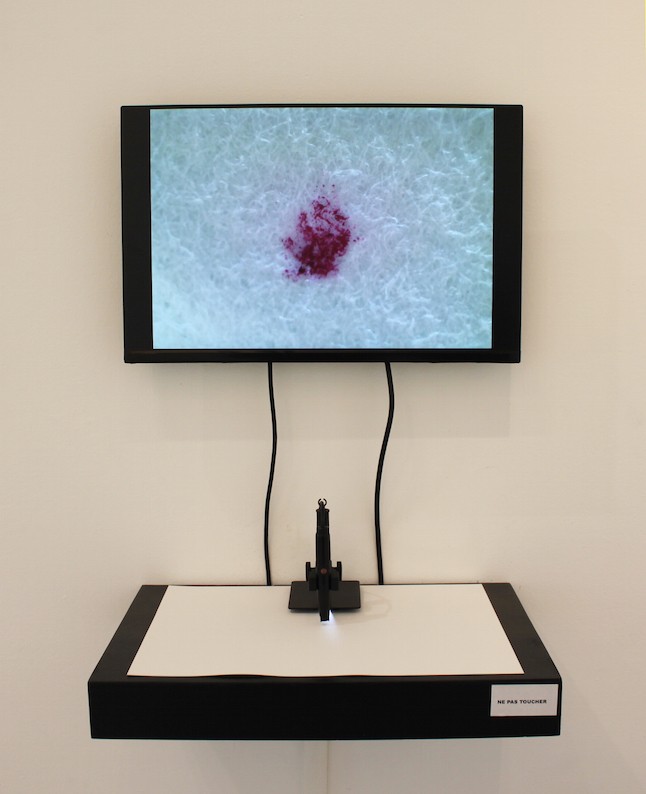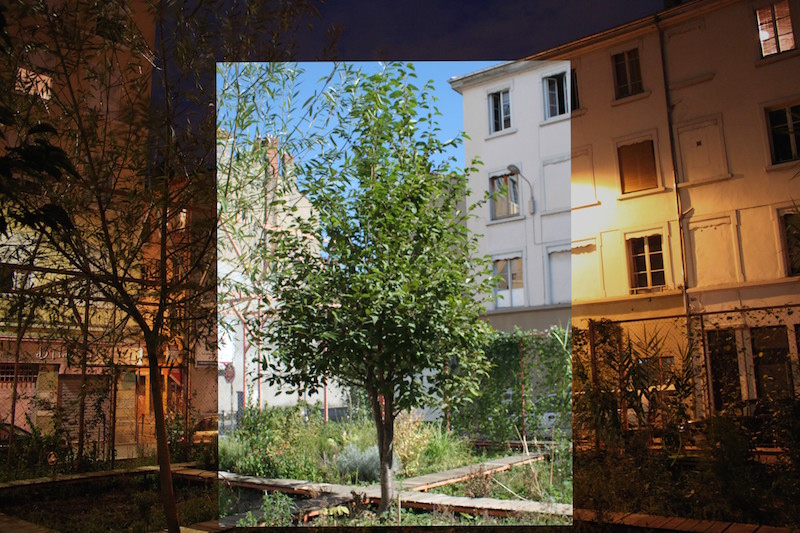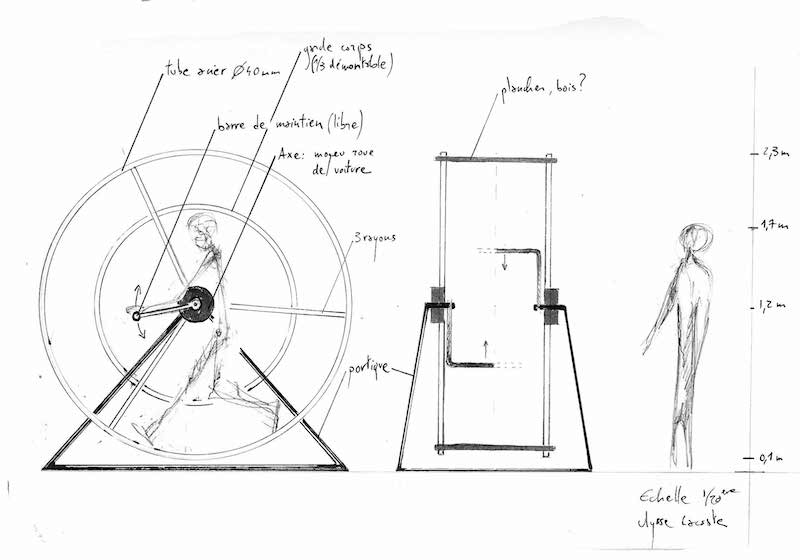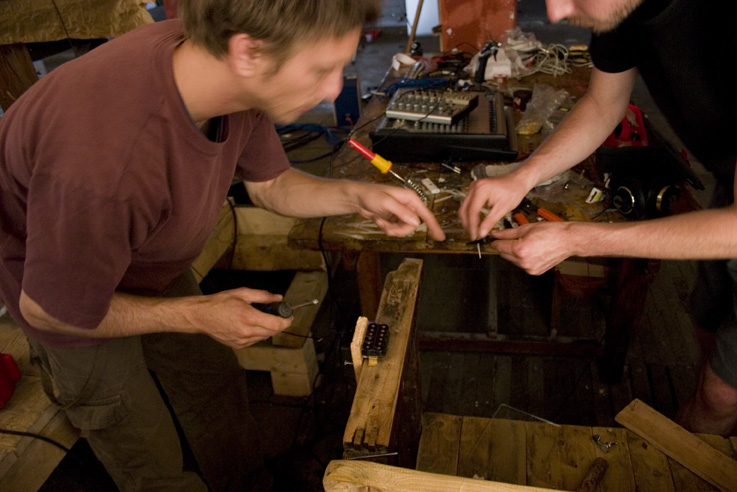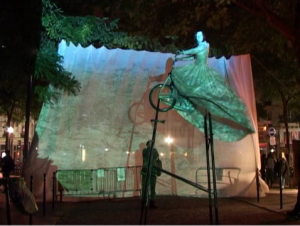“For one evening, become the actors and actresses of a black and white film, in short sequences recorded on the Cinematon booth: it’s as easy as a photo booth! These mini-films will be brought to life thanks to a video-mapping projection, that integrates them live on the building’s windows. Whether you want to mimic a romantic scene, a Western face-off, a burlesque stunt or the fateful moment of a thriller, don’t hesitate to come in costume!”
Le Cinématon is an interactive audiovisual installation, with video-mapping on the facade of a building. The public is invited to come along and record short sequences on the Cinematon arcade booth, using a video-matting technique (a neural-network algorithm version of the cinema’s green screen).
These sequences are then replayed in the building’s windows, whose shutters open and close virtually on a range of picturesque settings: the alien planet of a sci-fi movie, an underwater backdrop, a western saloon, a disco club, or with typical cinematic effects : stop-motion, reversed shots, etc.
Behind each of the building’s windows plays a different version of Scott Joplin’s famous “Maple Leaf Rag”: on a banjo, a church organ, steel-drums, accordion, double bass, drums and theremin (among other less conventional instruments). This gives rise to unpredictable musical collisions as the shutters open randomly, paying an odd and heartfelt tribute to the master of rag time.
Direction & programming : Vincent Goudard
Production : AIAGOS – www.aiagos.com
Commission : Nuit Blanche / Mairie de Paris, Mairie de Cachan.
Special thanks
Anthony Rushforth for helping me with neural net programming, Marc Caira for helping to cut out the arcade machine, Aaron Jonah Lewis who kindly let me use their fantastic banjo version of Joplin’s Maple Leaf Rag (go check their bandcamp!), Jean-Jacques Jaffredo, Serge de Laubier, Gladys Brégeon, Olga and Anatole for their precious advices.
Credits
Main music theme: Scott Joplin’s “Maple Leaf Rag” (1899); Aaron Jonah Lewis : Maple Leaf Rag (Banjo version); Some sounds excerpts from freesound.org: AlienXXX, LukaCafuka, ohrpilot, Nimlos, Pfannkuchn, klankbeeld – thanks to them!
The Cinematon was premiered during the Grand Paris’ “Nuit Blanche” festival, at the Maison Raspail in Cachan, on 7th June 2025… under a stormy and rainy weather! ⛈️ ☔️ ️
Media
Video to come soon. Technical rider on request.
